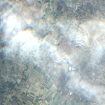- 3 replies
- 3,424 views
- Add Reply
- 0 replies
- 866 views
- Add Reply
- 3 replies
- 1,393 views
- Add Reply
- 5 replies
- 1,646 views
- Add Reply
NDVI images with Sentinel 2

By ASalas,
Hello:
I am working with Sentinel 2 images to generate NDVI maps, using QGIS. I create the NDVI image with the raster calculator using the formula NDVI=(NIR-R)/(NIR+R), but I wonder how do other factors such as cloud shadow or the previous treatment of the images. I also would like to know the difference of working with the 1C data or the 2A data to get NDVI values.
Linkage mapper
Linking many polygons using linkage mapper
By Maya007,
I have a set of polygons showing core forests and also sets of lines showing the connections between core forests. Is it possible to link these polygons with the given lines using linkage mapper?
Linkage mapper
By Maya007,
Hello all,
Can anyone suggest where i could find details about "Linkage mapper". I tried to run linkage mapper tools in ArcMap 10.5 version and it shows some errors
Thanks
Least cost method in Arcmap
By Maya007,
Hello again,
I was trying to do least cost distance using ArcMAp. I tried to run least cost distance tool and it shows error as 999999. The input raster used in the cost distance tool were
1.A raster file showing the origin
2. Resulting file from a weighted overlay tool.
I think the raster file showing the origin has some problem which stops the operation. I was trying with a dummy point to know how this funtion works. Is it because of that? I first made a point shape file
-
Forum Statistics
8.8k
Total Topics43.5k
Total Posts



